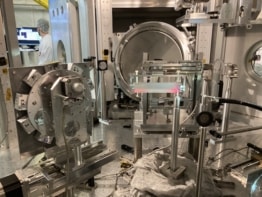Stars in the early Universe ought to have contained only tiny quantities of elements heavier than helium. Previously, however, astronomers could not find stars containing less than 1/10 000th of the amount of metal found in the Sun, a value much higher than is expected for stars in the early Milky Way. Now, Norbert Christlieb and his colleagues at the University of Hamburg have found a distant star that contains only about 1/200 000th of the Sun’s metal content (N. Christlieb et al 2002 Nature 419 904).
The chemical composition of the earliest stars reflects the composition of the gas from which they were made. Since stars themselves generate all of the elements in the Universe except hydrogen, helium and a small amount of lithium, the oldest stars should contain very little of the heavier elements (known collectively as metals). Some of these stars should still be observable but have eluded astronomers for decades.
The star investigated by Christlieb and co-workers, called HE0107-5240, is part of the Milky Way’s halo. It was identified as a possible metal-deficient star by a spectroscopic survey of the southern sky carried out by a collaboration between the University of Hamburg and the European Southern Observatory (ESO). This survey is more sensitive and some ten times larger than earlier surveys.
Christlieb’s group carried out more refined spectroscopic measurements of the star at the 2.3m Siding Spring Observatory in Australia and on one of the 8m telescopes at ESO’s Very Large Telescope in Chile. These results showed that the star is indeed metal deficient. It contains only 1/200 000th of the amount of metal in the Sun and even its strongest metallic spectral lines are extremely faint.
The team is currently using the Siding Spring Observatory to investigate other metal-deficient candidate stars from the Hamburg/ESO survey. Such stars should provide important information about star formation and may also lead to an improved estimate of the age of the Universe.
“Finding more metal-poor stars should help us understand the epoch of the first star formation, since these stars are our best direct ‘witnesses’ of this epoch,” says Christlieb.



